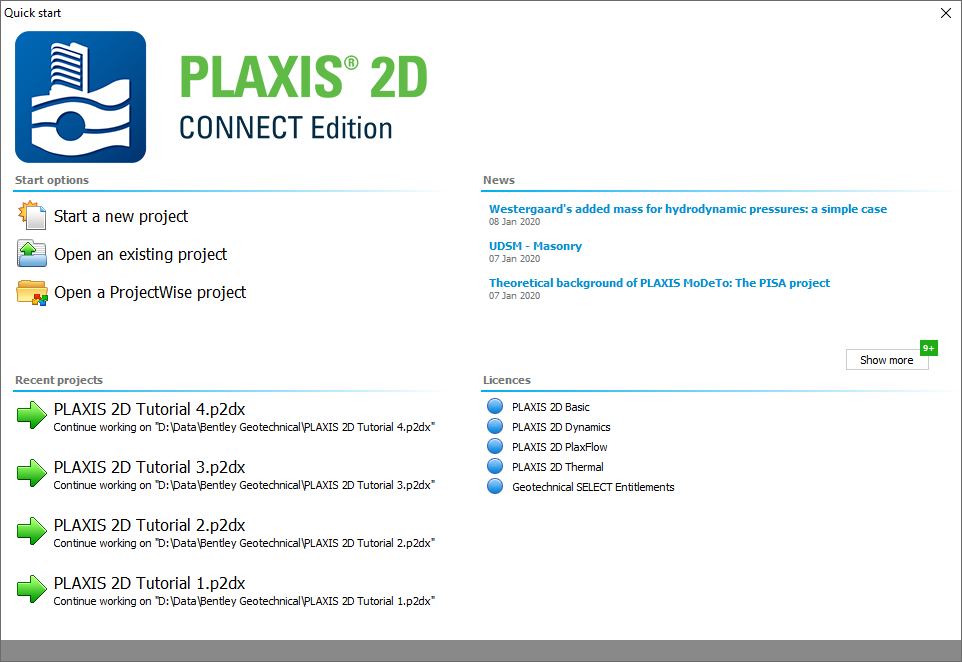

- Import data from plaxis 2d install#
- Import data from plaxis 2d plus#
- Import data from plaxis 2d free#
The top dummy layer is then excavated so that the piles are left extending above the soil surface. The user then converts the soil within the pile cross-section to the properties of concrete. One trick to get around this is by creating an extra layer of soil above the ground surface a 'dummy' layer. It can be difficult, however, to have these piles extend above the ground surface where there is no soil volume.
Import data from plaxis 2d install#
In order to install a pile, PLAXIS first needs a volume of soil to convert to the properties of concrete during the pile installation phase. Showcase Willemspoortunnel Video Case Study Learn more about variant with a large spanning building over the tunnel area with an excavated basement pit. PLAXIS FOR BEGINNER - Example 4 "Settlement of flexible foundation"Īsk an Expert. Capabilities Create finite element models Efficiently create models with a logical geotechnical workflow. The Curve manager enables graph creation, plotting various types of results from available calculation data. Cross-section capabilities allow for a more detailed analysis of the results. Leverage powerful and versatile post-processing and display forces, displacements, stresses, and flow data in contour, vector, and iso-surface plots in various ways. Well proven and robust calculation procedures ensure converging calculations and accurate results. Constitutive models range from simple linear to advanced highly nonlinear models through which soil and rock behavior can be simulated. With plastic, consolidation and safety analysis calculation types, a broad range of geotechnical problems can be analyzed. Accurately model the construction process by activating and deactivating soil clusters and structural elements in each calculation phase with staged construction. Automatically mesh to create a finite element mesh almost immediately. Efficiently create models with a logical geotechnical workflow.ĭefine everything from complex soil profiles or geological cross-sections to structural elements, such as piles, anchors, geotextiles, and prescribed loads and displacements. From excavations, embankments, and foundations to tunneling, mining, and reservoir geomechanics, engineers rely on PLAXIS as their go-to finite element analysis application. Create centerline for Structural Forces in Volumes.Perform two-dimensional analysis of deformation and stability in geotechnical engineering and rock mechanics.Įngineering companies and institutions in the civil and geotechnical engineering industry count on PLAXIS for a variety of projects. Consolidation: Minimum Pore Pressures and Degree of Consolidation analysis may give spurious displacements of boundary nodes. Homeopathic detox dropsĬonnect a node-to-node anchor with an embedded beam row halfway.
Import data from plaxis 2d free#
Compliant base and free field boundaries: check on input signal. Application of commands: Referring to objects through their index.Ĭhange temporary folder for intermediate calculation data files.Ĭodemeter Network Installation. Application of commands: Groupfiltered and Apply. After a consolidation analysis I have excess pore pressures in "drained" material sets. Here the smart selection will stop adding lines to the current selection.

Smart selection of an NATM tunnel lining: top, separation and bottom. The geometry shows a top heading consisting of 4 segments, a separation with 2 segments and the bottom consisting of 6 segments.įigure 3. This smart selection is also a convenient tool to select tunnel linings. Usually, a retaining wall will consist of several parts in the Staged Construction mode because of e.
Import data from plaxis 2d plus#
The program will then automatically select this line plus the connected lines that have the same feature e. Need help working from home with your Bentley software? We're here to help - click here.


 0 kommentar(er)
0 kommentar(er)
